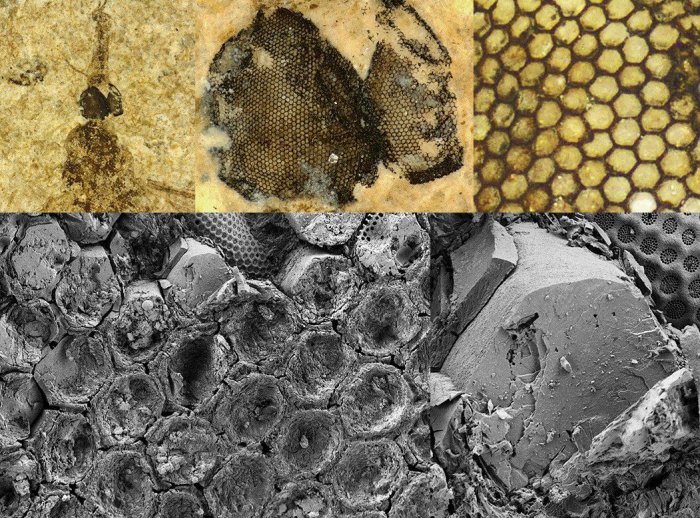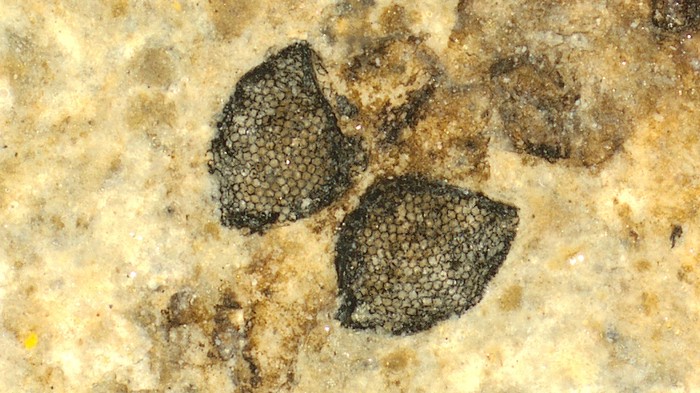Crane flies aren't exactly the smallest flies in the world. Just ask Northern Irish pro golfer Graeme McDowell!
Buzzzzzzzzzzz... (Getty Embed)
See? (We just really like that photo! Anyway, sorry... Where were we?)
Yes. Crane flies! They're big for flies. But in the grand scheme of things? Still extremely tiny, delicate creatures. Certainly not the kind of thing that you expect to find evidence of millions of years later. And yet...
We'd like to share with you one of the most mind-blowing fossils that we've ever seen. The compound eyes of crane flies that lived 54 million years ago. Whoa!
Unbelievable detail, full of clues

Closer, closer, closer! The structure of the compound eyes is remarkable when viewed under an electron microscope. (Johan Lindgren/Nature)
Compound eyes are the most common eye structure found in the animal kingdom. You can thank crustaceans, insects, and other bug-like critters for that stat. One of the earliest known examples of an animal with them are trilobites, ancient arthropods that lived over 500 million years ago and are similar to horseshoe crabs.
According to paleontologist Johan Lindgren of Lund University in Sweden, these unique crane fly fossils challenge how scientists believe these eyes evolved. Each unit of a compound eye is called an ommatidium (plural: ommatidia). You can see them by the hundreds in the images above. By analyzing these units, Lindgren and his colleagues have reached an eye-opening conclusion.
Eyes across time
In a nutshell, their research found intriguing similarities between the eyes of modern crane flies and the ones of these fossils. It leads the scientists to believe that the eyes that ancient crane flies saw through were much more similar to the ones of today than previously believed. We didn't see that coming!
And more than that? If crane fly compound eyes from 54 million years ago are a lot like today, then why not those of other arthropods? Even those of the 500-million-year-old trilobite? More research is needed to know for sure. But it certainly helps us see prehistoric life a little more clearly!
 "Look into my eyes!" (Johan Lindgren)
"Look into my eyes!" (Johan Lindgren)










hello, i think that this is cool i saw crane flies in real life too!
ewe
I see them so much at my grandma and grandpas
house.